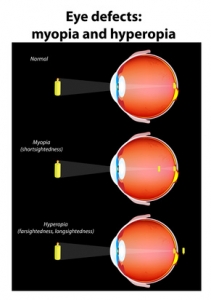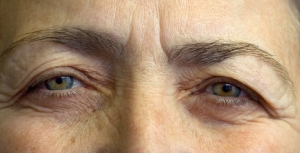Glaucoma
What is Glaucoma?
Glaucoma refers to a category of eye disorders often associated with a dangerous buildup of internal eye pressure (intraocular pressure or IOP), which can damage the eye’s optic nerve – the structure that transmits visual information from the eye to the brain.
Glaucoma typically affects your peripheral vision first. This is why it is such a sneaky disease: You can lose a great deal of your vision from glaucoma before you are aware anything is happening. If uncontrolled or left untreated, glaucoma can eventually lead to blindness.
Glaucoma is currently the second leading cause of blindness in the […]

 Hyperopia, or farsightedness, is a common vision problem affecting about 25% of the U.S. population. People with hyperopia can usually see distant objects well, but have difficulty seeing objects that are up close.
Hyperopia, or farsightedness, is a common vision problem affecting about 25% of the U.S. population. People with hyperopia can usually see distant objects well, but have difficulty seeing objects that are up close. Technically, pink eye is the acute, contagious form of conjunctivitis – inflammation of the clear mucous membrane that lines the inner surface of the eyelids and overlies the white front surface of the eye, or sclera. Bacterial infection causes the contagious form of conjunctivitis.
Technically, pink eye is the acute, contagious form of conjunctivitis – inflammation of the clear mucous membrane that lines the inner surface of the eyelids and overlies the white front surface of the eye, or sclera. Bacterial infection causes the contagious form of conjunctivitis. Ptosis (pronounced “toe-sis”) refers to the drooping of an eyelid. It affects only the upper eyelid of one or both eyes. The droop may be barely noticeable, or the lid can descend over the entire pupil. Ptosis can occur in both children and adults, but happens most often due to aging.
Ptosis (pronounced “toe-sis”) refers to the drooping of an eyelid. It affects only the upper eyelid of one or both eyes. The droop may be barely noticeable, or the lid can descend over the entire pupil. Ptosis can occur in both children and adults, but happens most often due to aging.